2023 Kawasaki Ultra 310LX Review
Kawasaki has long taken a rather conservative approach to their Jet Ski lineup. The Ultra 310 models are amazing performers, with legit ocean-worthy credentials and abundant horsepower, but they haven’t changed much over the years. Admittedly hull and horsepower probably didn’t need to; they kept pace with the competition just fine. But technology and features? They’ve fallen pretty far behind the times. But relatively late into the 2022 model season the Jet Ski originator definitively changed that perception, with the all-new Ultra 310LX.
This machine retains all the Ultra’s familiar power but improves handling… and delivers technology that not only keeps pace with the competition, but in many ways sets the bar higher than ever.
Stacking The Deck For The Ultra 310LX
The Ultra 310LX might not be very new in name, but the craft itself sports some radical changes. No, hull and engine have not changed. As alluded to above, the Ultra’s classic 22.5-degree deadrise, deep-V design and top-notch acceleration and speed didn’t need to play catch up. Get your first glimpse of the model, however, and the makeover is obvious.
Start with the new three-dimensional deck design. Sleeker than the Ultras of old, it sports a noticeably lower profile and streamlined bow. Deck height has dropped by almost 1 1/2 inches. The Ergo-Fit LXury saddle is narrower, scalloping in well over 3 inches in the all-important knee region. Footwells are wider and deeper. Saddle construction has also changed, with a new urethane foam that absorbs vibration and, though seemingly less bulky than its predecessor, offers better hip support. Topside vinyl stays cooler to the touch on hot days. The saddle itself is also tiered higher for each passenger, ensuring a better view forward, and is adjustable fore and aft to dial in the reach for individual drivers.
Certainly all combine to offer both driver and passenger superior ergonomics, but it’s the abundance of new features integrated into this top deck that truly set the boat apart. Start with a new take on storage. Complementing the nearly 33-gallon bow storage compartment are now twin, gullwing-style compartments integrated into the design below the craft’s rearview mirrors. Open and reveal two gloveboxes with a total 10.6-gallons of storage. The starboard compartment includes a watertight compartment large enough for items like phone and wallet and dual USB charge ports. Combined with an open pocket at the stern for wet items like dock lines or ski ropes and storage totals 44.5 gallons. That’s a drop from the previously mammoth 60-gallon capacity but gullwing compartments definitely get a thumbs up for easy access from a seated position. Still, the considerable shrinking of the bow compartment means larger items may have to be left at the dock.
Other changes include the relocation of the gas filler neck, which allows for a larger 21.1-gallon fuel capacity, built-in dock cleats, larger rearview mirrors and redesigned front and rear bumpers that knock down splash.
That Long-Awaited Tech
The biggest news, however, is likely a massive upgrade in technology. On the list of most-welcome additions is the long-awaited debut of an electronic reverse and deceleration system. Kawasaki’s Smart Reverse With Deceleration (KSRD) is notably different than competitors approaches, integrating the reverse and throttle lever into one unit. Pull the throttle back and produce normal acceleration. Push the reverse portion of the lever forward with your thumb and the reverse gate deploys to rapidly slow the craft, the attached throttle moving forward like a hyperextended joint. With no input the craft automatically goes into neutral. Push the reverse lever at idle speeds and the craft moves in reverse. It’s different than competitive approaches but I found it just as intuitive after a brief familiarization.
While on the subject of drive controls, Kawasaki reduced the tension on the throttle lever, which reduces fatigue on longer rides. Drivers can also now choose from a trio of power settings — full, the default middle (80% of full power) and low (60% of full power) — to access the engine’s full potential or tame the response for conditions, watersports towing or novice drivers. A new Kawasaki Launch Control Mode (KLCM) automatically positions trim for optimum acceleration response. KLCM can be set to activate on only the first acceleration or remain on for the entirety of your ride. Conventional cruise control and no-wake modes return; both can be adjusted up or down in a trio of increments to fine-tune.
 Forward/neutral/reverse, various drive settings, sound system settings (big news on that still to come) and conventional data like speed, tach, fuel level and trim are now all monitored via an improved 7-inch wide TFT color display which automatically adjusts brightness to match lighting conditions, features three display modes and is shaded by an extended visor. Scroll through settings via a dial knob directly in front of the saddle. Kudos to Kawasaki for locking out some of these various functions above no-wake speed to prevent distracted driving.
Forward/neutral/reverse, various drive settings, sound system settings (big news on that still to come) and conventional data like speed, tach, fuel level and trim are now all monitored via an improved 7-inch wide TFT color display which automatically adjusts brightness to match lighting conditions, features three display modes and is shaded by an extended visor. Scroll through settings via a dial knob directly in front of the saddle. Kudos to Kawasaki for locking out some of these various functions above no-wake speed to prevent distracted driving.
Now onto that sound system. The all-new 200-watt Jetsound 4S not only finally welcomes Bluetooth, it also now includes four speakers. Two 35-watt speakers flank the display. Two 60-watt speakers are positioned at the front of the footwells and directed upward toward the driver. The result is superior sound quality for both driver and passengers. A joystick control knob to the left of the display is within reach and can skip forward or back in playlists as well as adjust volume.
Other tech goodies? Check out the rearview camera that can be monitored via the dash display. With a large field of view (155-degrees horizontally/115 degrees vertically), it may seem like a novelty but comes in handy when reversing away from dock or launch ramp or picking up a downed watersports rider. The Ultra 310LX also comes with daytime LED running lights to increase the craft’s visibility out on the water.
Headed For A Showdown
Overall performance is familiar. Kawasaki’s 1,498cc, 310hp engine with twin-vortices supercharger and liquid-cooled intercooler remains ultra-impressive, pushing the craft to flagship speeds — an even 67 mph during my test ride in slightly choppy conditions — and accelerating with the brutal force (and sound) buyers have come to expect. Just don’t expect easy access to that engine; it’s now weirdly covered by a full-length plate with only a small plastic window opening. I’d prefer an open compartment not only for inspection and maintenance, but also ventilation when not in use.
As to handling, the craft’s rough-water prowess remains one of its greatest strengths, ready to take riders into larger, or even offshore conditions with confidence. Only cornering ability noticeably changes. Always surprisingly agile for its size and weight, the newly lowered center of gravity makes the craft feel even more sporty and smaller than its size would indicate. Blasting across the water then leaning intuitively into a high-speed corner is almost guaranteed to evoke a kid-sized grin for even the most jaded PWC enthusiast.
Obvious competitors include Sea-Doo’s GTX Limited 300 ($18,899) and Yamaha’s FX Cruiser SVHO ($19,999). Both offer impressive power delivery, solid hull designs and lots of those flagship extras.
For arguably the first time, however, a Kawasaki model sits not only firmly in the mix of these premium flagships…it may be making a play to lead the pack.
Get PersonalWatercraft.com in your Inbox!
Like PersonalWatercraft.com on Facebook
Comments
Most Popular

2025 Yamaha JetBlaster PRO 2-Up Review

Remembering the Sea-Doo XP

2024 Kawasaki Jet Ski STX 160X Review

2017 Kawasaki Jet Ski Ultra 310LX Review

Whatever Happened to the Wetbike?

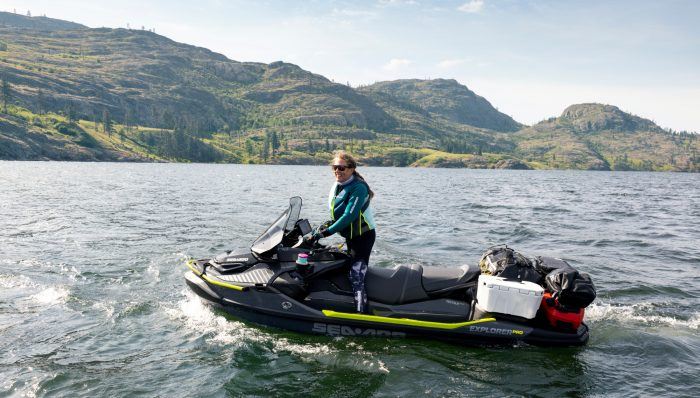
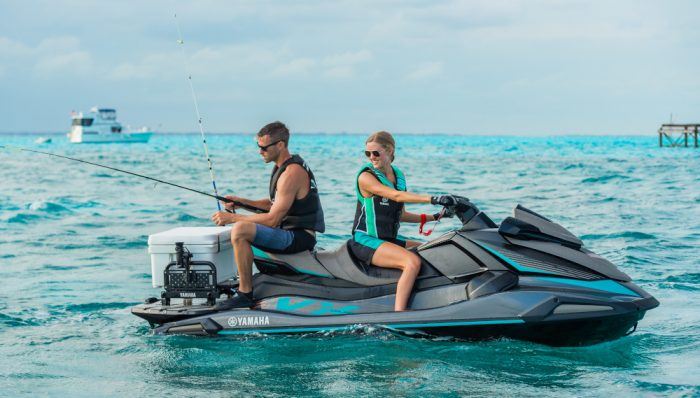
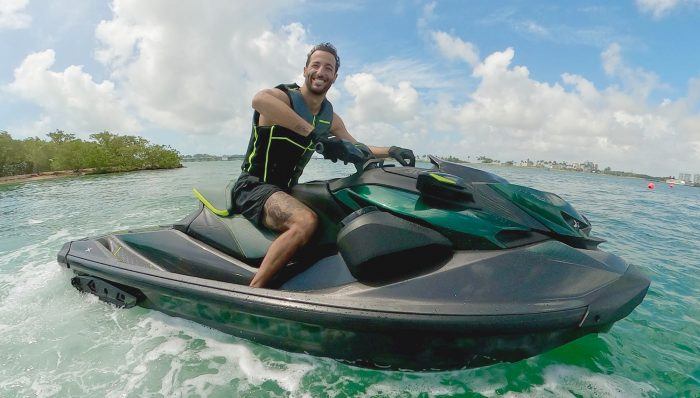







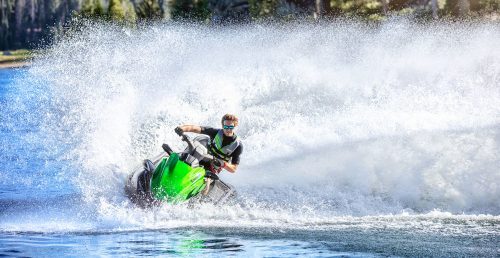




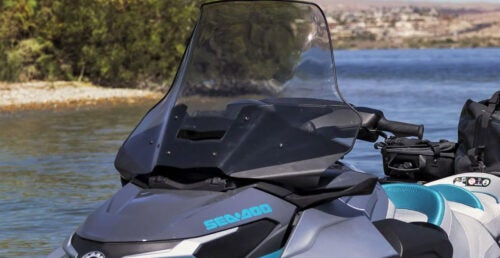
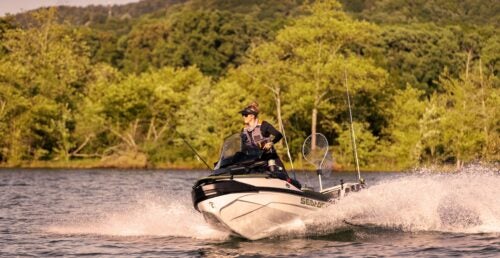


 Your Privacy Choices
Your Privacy Choices